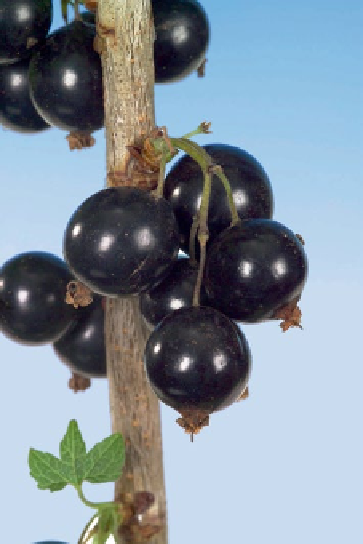Agriculture Reference
In-Depth Information
Fig. 9.6
Blackcurrant cv.
Ben Starav, bred at the James
Hutton Institute, Scotland for
the juice processing industry
Gooseberries can be divided into two groups, deriving from Europe and North
America respectively. The European group is based on
R. grossularia
, with large
fruited types described from the sixteenth century, whilst the North American types
are mainly based on the native species
R. hirtellum
and
R. oxyacanthoides
.
Genetic Resources and Breeding
The
Ribes
genus contains around 150 species of shrubs distributed throughout
northern temperate Europe, North America, Asia and the mountain regions of South
America and North Africa. However, to date only a relatively small proportion of
the available species have been used in breeding, and there is increasing interest
in the wild genepool as a source of valuable traits (Brennan
1990
), particularly for
environmental resilience and pathogen resistances.
Breeding of new blackcurrant cultivars has been in progress since the early nine-
teenth century, and today there are active programmes in Northern and Eastern Europe
and New Zealand. The objectives of most breeding programmes are closely aligned
with specific end-user requirements, notably from the processing industry (Fig.
9.6
).
The breeding of redcurrants and gooseberries is more restricted, with programmes in
Eastern Europe and the Baltic States, and many older cultivars are still in commercial
production. In the case of blackcurrant, there are now significant genomic resources
available (Brennan et al.
2008
; Russell et al.
2011
), and these are being developed to
decrease selection time in breeding programmes.

